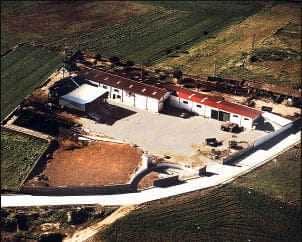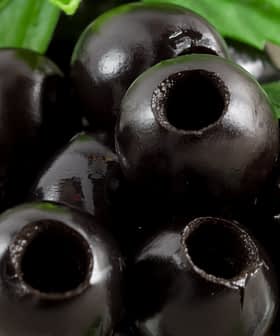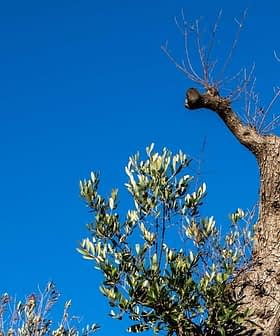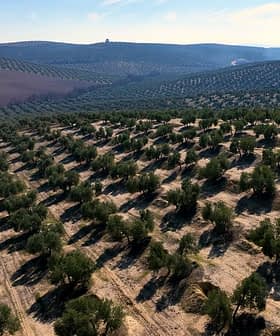By Sarah Schwager
Olive Oil Times Contributor | Reporting from Buenos Aires
A hailstorm that destroyed up to 80% of olives in Spain’s Monterrubio de la Serena late last week has highlighted the devastating effects weather events can have on olive farmers.
The region, renowned for producing superb quality extra virgin olive oil, experienced strong winds, hail that caused whole branches to topple and rain so fierce that it dumped 30 liters of water per square meter in an hour around 9pm last Thursday.
The storm comes just weeks before harvesting, which traditionally begins on November 1. It could have serious effects on the region’s economy, with olive cultivation one of Monterrubio’s main sources of income.
Cooperative society La Milagrosa de Monterrubio has released a statement saying while there is still massive uncertainty in the area, early estimates are that 50% of the fruit remaining in the trees is damaged and 70% of olives within the Protected Designation of Origin (PDO) olive oil zone have been affected.
Last season the region lost one million kilograms of olives due to the weather, reducing the olive harvest by 17%.
La Milagrosa’s technical services suggest the losses in Monterrubio are likely to be even greater as the olives appeared on trees early this season.
The society also warns such fierce storms can cause a number of repercussions on the olive trees such as tuberculosis, olive leaf spot and “soapy olives” caused by plant pathogens.
 The olive oil region is not alone in reaping the wrath of Mother Earth. Olive growers have been battling the weather for as long as olives have been farmed. Storms wiped out whole olive groves in Spain’s Murcia region in 1930 and seriously destroyed crops in the north of the country in August 2007.
The olive oil region is not alone in reaping the wrath of Mother Earth. Olive growers have been battling the weather for as long as olives have been farmed. Storms wiped out whole olive groves in Spain’s Murcia region in 1930 and seriously destroyed crops in the north of the country in August 2007.
Last year Australian olive oil estate Timbercorp was forced to go into liquidation largely due to a debilitating decade-long drought in the south of the country.
In 2005, severe frosts killed 4% of Spain’s olive crops. Frost prevention is a constant concern for olive growers during the winter harvest as olives can be damaged at temperatures below just 29ºF while young olive trees and branches can be destroyed at temperatures below 22ºF[1].
In the American South, Georgia farmers are attempting to again produce olive oil after an 1898 hurricane destroyed what was left of the state’s olive orchards that had been thriving since the 1600s, the Washington Post reported this week.
Hailstorms are frequent crop killers, affecting olive groves all over the world. In March last year, groves around New Zealand’s capital Wellington were hit by hailstorms, damaging half of the region’s table olives. They were then hit again in May when snow fell on crops as low as 300 meters above sea level.
La Milagrosa will continue to assess damage in the Monterrubio region over the coming days before producing a final report which may include a request for aid to the various government administrations.
Meanwhile the society’s preliminary document has been referred to the Plant Protection Department of the regional government’s Ministry of Agriculture and Rural Development.
.
[1] The Olive Oil Source — Olive grove frost prevention









